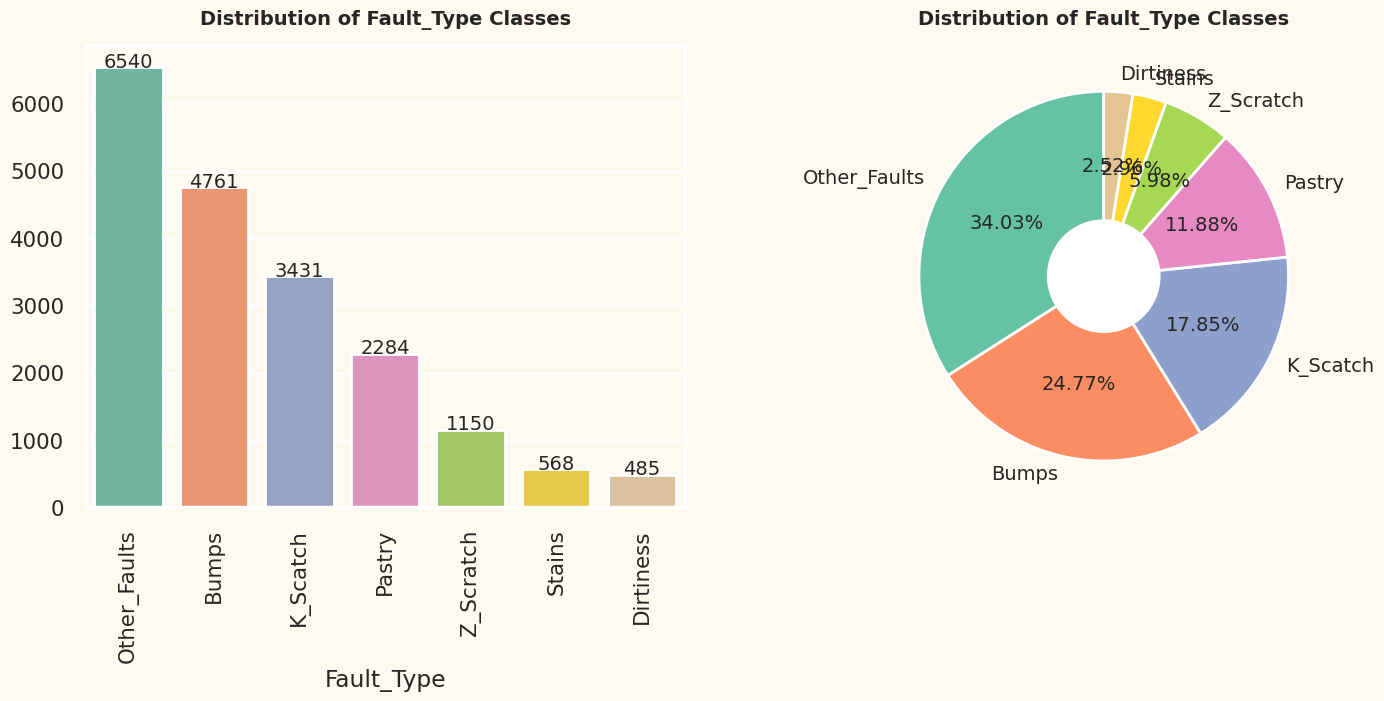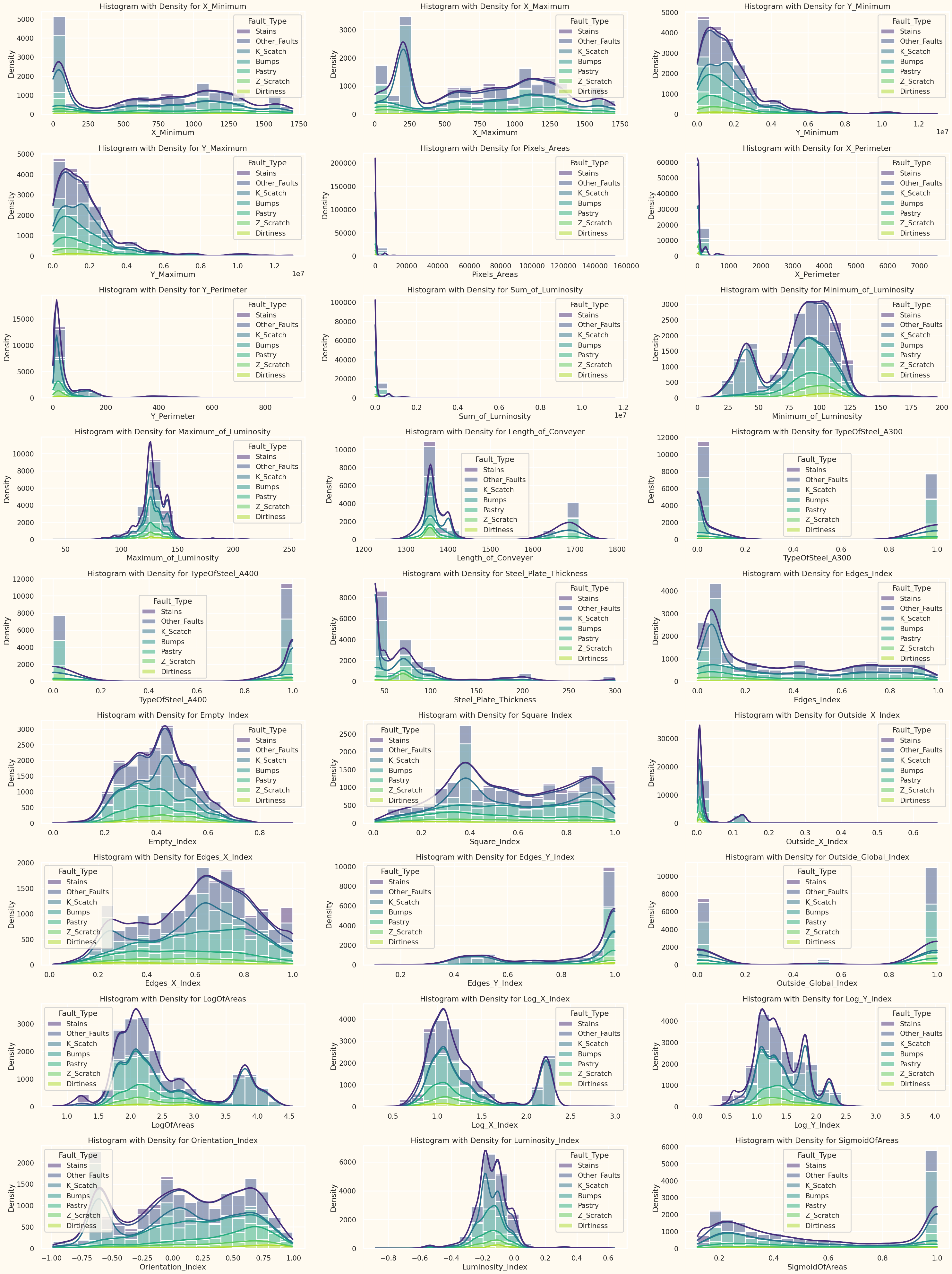- Competition Title: Steel Plate Defect Prediction
- Goal: Predict defects in steel plates using machine learning techniques
- Approach:
- Utilized XGBoost, CatBoost, and LightGBM
- Ensembled the best performing models.
- Achieved an accuracy of 0.88905 on the test dataset
- Conducted comprehensive data cleaning to address inconsistencies and errors.
- Implemented custom functions for efficient cleaning of the columns.
Insights were derived through various visualizations:
To find the optimal hyperparameters for the XGBoost model, I used a manual tuning approach. I started with a set of default parameters and then iteratively adjusted the values of the hyperparameters one by one, evaluating the model's performance after each change.
xgb_best_params_for_y7 = {
'max_depth': 4,
'n_estimators': 663,
'gamma': 0.6429564571848232,
'reg_alpha': 0.3267006339507057,
'reg_lambda': 0.04658361960102192,
'min_child_weight': 6,
'subsample': 0.9939674566310442,
'colsample_bytree': 0.1435958193323451,
'learning_rate': 0.24960789830790053
}-
Description: The Voting Classifier is an ensemble learning method that combines the predictions of multiple base classifiers to make final predictions.
-
Components:
- Estimators: Base classifiers are provided as tuples containing a unique name and the trained model object.
- Voting Method: Determines how final predictions are computed ('hard' or 'soft').
- Flatten Transform (Optional): Flattens the output of each classifier before combining.
-
Considerations:
- Diversity of Base Models
- Computational Complexity
- Interpretability
-
Example Usage:
from sklearn.ensemble import VotingClassifier
ensemble_model_for_y7 = VotingClassifier(
estimators=[
('xgb', xgb_model_for_y7),
('catboost', cb_model_for_y7),
('LGBM', lgbm_model_for_y7)
],
voting='soft',
flatten_transform=True
)
ensemble_model_for_y7.fit(X_train, y_train)


